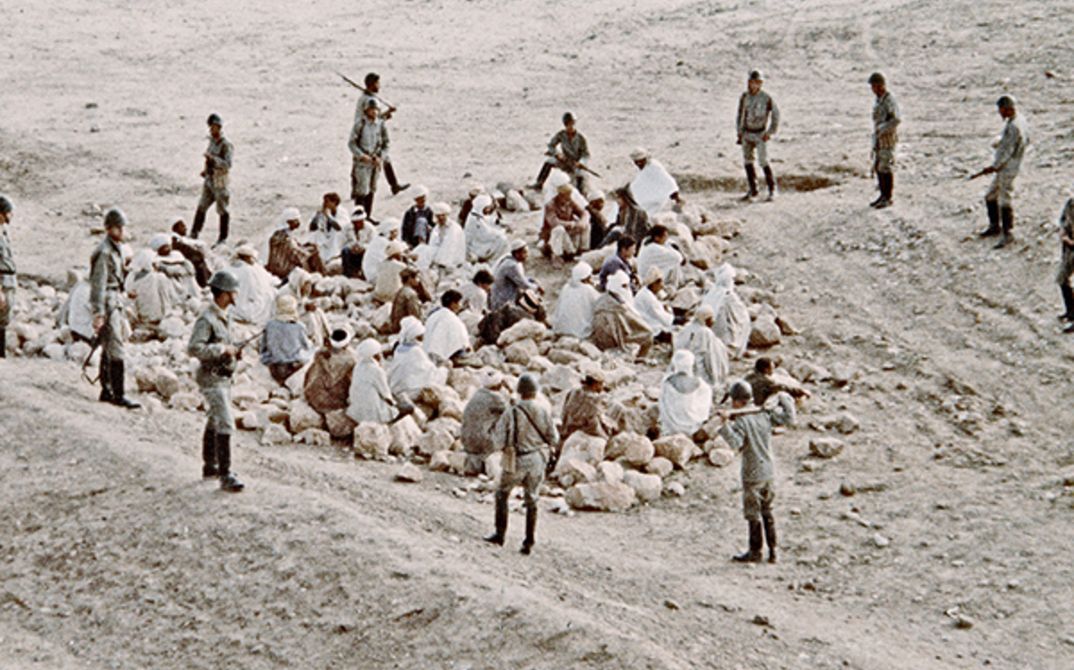Interview with Jean-Louis Bertuccelli: “I envisioned fusing a Japanese and a Brazilian style”
How did you come to shoot REMPARTS D’ARGILE?
On a trip through Tunisia, I discovered the village Chebika on the outermost edge of the Sahara. I was fascinated by its people and stayed there for about a month. When I was back in France, I learned that the sociologist Jean Duvignaud had written a book about this village, a study he undertook together with five Tunisian students. The book depicts a quarry labourers’ strike that the army wants to put down and a girl who mysteriously disappeared in the desert one day. Although “Chebika” was not banned in Tunisia, the responsible authorities (after some back and forth) did not grant me permission to shoot, and I was not able to make REMPARTS D’ARGILE as a Tunisian-French coproduction, as I had wanted. I think this book was not well-liked. Certainly, it was accused of creating the impression that the southern part of the country was neglected. So I turned to Algeria. There, Mohamed Lakhdar-Hamina (the director of VENT DES AURÈS and HASSAN TERRO) was very accommodating. The Office Actualités Algériennes provided 40% of the funds for my film (whose total budget was 50 million old francs). With the Algerian assistant Mohamed Bouamari, I now searched for a village that resembled Chebika. Finally, we found Tehouda, just 50 kilometres away from Chebika on the other side of the border. We shot the film in eight weeks. But because of the bad weather (floods rendered 50,000 people homeless and killed 300), we actually could only shoot on 18 days during that period. (…)
Did you have a precisely laid-out script?
No, very little had already been worked out. I dealt with whatever happened. I invented a lot that isn’t in the book. As much as possible, I took recourse to life in the village. Of course, I had to change some things. For example, Chebika has no well. And Tehouda is a village of clay, not stone… (…)
Was it intentional that you have REMPARTS D’ARGILE begin almost in the style of traditional ethnographic films?
I’m glad that you experience the beginning that way. It was indeed my intention to “put people in the mood” and to gradually get them to see things differently. But I wasn’t sure if the viewers would accept this long, slow 20-minute introduction. I don’t know if my film is adequately structured, but I love the atmosphere that arises from this introduction. I would like viewers to feel at the end of the film the way I felt while shooting it. (…)
Especially astonishing is Andréas Winding’s photography. Did he work in accordance with your wishes, or were these images the product of his own imagination?
I didn’t want art pour l’art, but I didn’t want to make a sloppy film, either. I’ve often heard how directors tell a cameraman, “I want this or that shot.” That’s not how our film came about. We talked about all kinds of things and arrived at a certain rapport. Of course, I would never have achieved such a result with another cameraman. (…)
Why was the end of the film shot from a helicopter?
I admit, the end is very ambiguous. You have to consider the state I was in after shooting: I had sent all the film material to Paris to be developed and had not seen a single frame. So I knew nothing at all about our result. Suddenly I had the feeling that my work made no sense. I thought somehow I needed to make it more concrete, and I told Winding he should film the pilot of the helicopter we were sitting in. I wanted to do that to bring some distance into the film.
The rhythm of REMPARTS D’ARGILE is astonishing. Did you find it while writing the script, while shooting, or during the edit?
I can’t say precisely. It arose on its own. I had a feeling about the film.
The style of your film is rather unusual. One doesn’t know how to define it...
I love the Italian films like BANDITS OF ORGOSOLO and Dreyer’s films. For REMPARTS D’ARGILE, I envisioned fusing a Japanese and a Brazilian style. I love things that are simple and powerful at the same time. By the way, this is the first time that the southern Maghreb has really been shown in film.
(Interview: Guy Hennebelle, Cinéma 71, No. 152, January 1971, p. 123 ff., Infoblatt No. 9, 1. Internationales Forum des jungen Films, Berlin 1971, Download PDF)
